Paolo Soleri's sustainable urban experiment Arcosanti enters new era
We meet Liz Martin-Malikian, Arcosanti’s new CEO, who takes us through the vision and future for Paolo Soleri's sustainable urban experiment

Off Interstate 17, an hour north of Phoenix and two miles past a Love’s Travel Stop gas station, there’s a long dirt road that leads to ‘one of the most important experiments [in urban architecture] in our lifetime’, as a 1976 edition of Newsweek once described it – the sustainable architecture and urban experiment of Paolo Soleri (1919 – 2013), a prominent and also controversial figure of 20th-century architecture and urban planning. Arcosanti is a prototype in 'arcology' – a style of architecture blended with ecology.
The project was Soleri’s response to the ills of urban existence: population growth, pollution, natural resource depletion, food scarcity, and poor quality of life. All are themes that remain acutely relevant to this day. It is true that the architect's legacy has been more than marked by recent, shocking posthumous revelations around his private life. Despite this, the influence of Arcosanti remains and Liz Martin-Malikian, its new CEO aims to kick start a new era for the project.
With its series of vaults and apses, integrated housing designed around low-tech, passive solar principles (as opposed to using technology), multi-use spaces with large circular windows framing views of cliffs and vast stretches of land, Arcosanti still embodies a ‘back-to-land’ vibe and connection to community that’s fuelled by an ideal for a better way to live. Since 1970, over 8,000 volunteers have come here, spending weeks, and sometimes decades, building, improving, and even raising families.

'The first 50-years at Arcosanti were about one vision,’ says Martin-Malikian. 'The next 50 will be about the collective,' she adds, referring to multiple collaborations and partnerships with Indigenous communities and beyond that contribute to her aim to 'decode the notion of arcology’.
‘All of the processes, symbols, and meanings represented by Arcosanti will become the elements of an arcology toolbox we are creating to explore issues of erosion, water collection, water management and community building,' she says. 'The goal is to become the country’s first heat-ready community – equipped to survive a rapidly warming world.’
This is precisely what the students of The School of Architecture (TSOA), formerly Frank Lloyd Wright’s Taliesin West, are working on. TSOA’s headquarters are currently at Arcosanti, an irony not lost upon the older denizens of Arcosanti, who know the backstory – Soleri was expelled from Taliesin in 1949 by Frank Lloyd Wright himself.
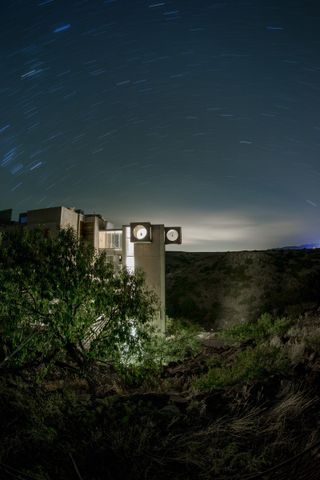
Walking throughout the surrounding 800 acres of Arcosanti, you might pass a monumental block of rammed earth with layered striations of soil and sand or a Palaeolithic-looking earthen pod with a large oval oculus framing the pristine landscape. These aren't archaeological artifacts. They are the TSOA students’ thesis shelter designs, focused on experimental sustainability for living and building in the desert. Historically, the student shelters accounted for the bulk of TSOA student housing. One of the TSOA students lives in the rammed earth dwelling now.
But in order for Malikian to begin to 'decode' Soleri’s notion of arcology, she must first reframe her vision to the new cultural and political landscape and ask herself the question: ‘Is the practice of architecture fundamentally equitable?’ She explains: 'Diversity has to start with the reservation and the land surrounding Arcosanti.’ In pursuit of answers, Malikian will collaborate with Walla Dalla Costa, the head of Arizona State University’s Design Collaborative and a member of the Saddle Lake Cree Nation in Alberta, Canada. Dalla Costa has spent nearly 20 years working with Indigenous communities in North America.
Wallpaper* Newsletter
Receive our daily digest of inspiration, escapism and design stories from around the world direct to your inbox
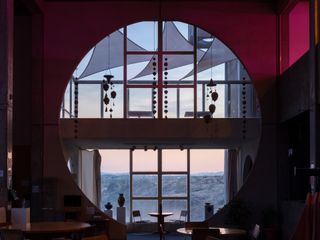
In the autumn of 2022, she’s rolling out the first Cosanti Indigenous Residency which will explore how Indigenous belief systems build and maintain connections with the land that go beyond just aesthetics and economics. Malikian is also spearheading an Indigenous co-design programme, called Equity in Co-designed Architecture, with three universities that are actively exploring the field. ‘[These programmes] will offer a new way to think of sustainability, combining passive design, regionalism, and climatic resiliency for future solutions,’ she says.
Soleri knew it was all about the land. It’s what first captivated him for his urban experiment and where he and his wife Colly are buried. Across a dry river bed, on top of a grassy knoll, there’s a 10 x 10 sq ft wrought iron fence. The wind caresses the native grass surrounding two small stone markers set in the earth. Beyond the graves, one can see Arcosanti on the ridge. The desert sky goes on forever.
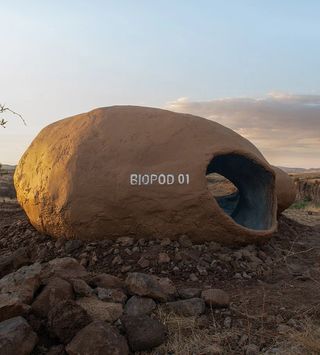
Pod created by Solomon Edelman, The School of Architecture.

Cinders rammer earth structure, created by Jessica Martin, The School of Architecture
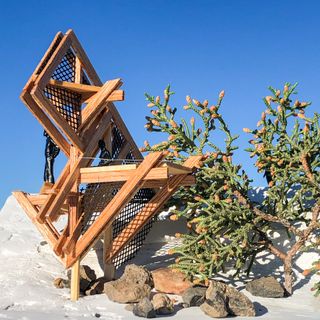
Octahedron created by Archie Kinney, The School of Architecture.
INFORMATION
-
 Frank Stephenson’s high-flying capsule design for HALO’s balloon-powered space flights
Frank Stephenson’s high-flying capsule design for HALO’s balloon-powered space flightsSpace start-up HALO promises zero-emission travel to the stratosphere in a futuristic viewing capsule shaped by Frank Stephenson Design
By Jonathan Bell Published
-
 Back to Black: all eyes on film-maker Sam Taylor-Johnson
Back to Black: all eyes on film-maker Sam Taylor-JohnsonBack to Black cinematographer Polly Morgan tells Wallpaper* how a shared love of French New Wave close-ups brought Sam Taylor-Johnson’s Amy Winehouse biopic to life
By Craig McLean Published
-
 Formafantasma’s new collection explores nostalgia and the queer identity
Formafantasma’s new collection explores nostalgia and the queer identityFormafantasma present 'La Casa Dentro' at Fondazione ICA Milano (until 19 July 2024), where they draw inspiration from the domestic sphere and their own nostalgic perceptions of home
By Laura May Todd Published
-
 A Petra Island house rises from Frank Lloyd Wright's original drawings
A Petra Island house rises from Frank Lloyd Wright's original drawingsBased on Frank Lloyd Wright drawings, the cantilevering Petra Island Massaro House, located in New York’s Hudson Valley, is now open to visitors
By Craig Kellogg Published
-
 An Upper West Side apartment by General Assembly nods to its history
An Upper West Side apartment by General Assembly nods to its historyAn Upper West Side apartment in New York has been born out of the reimagining of two neighbouring units, which were combined by General Assembly for a young family
By Ellie Stathaki Published
-
 New York's Leica store echoes the brand's blend of heritage and innovation
New York's Leica store echoes the brand's blend of heritage and innovationLeica store throws open its doors in New York's Meatpacking District, courtesy of Brooklyn based Format Architecture Office
By Adrian Madlener Published
-
 Hudson Valley Residence is a low-lying retreat that seamlessly blends into the horizon
Hudson Valley Residence is a low-lying retreat that seamlessly blends into the horizonDesigned by HGX Design, Hudson Valley Residence is a scenic home offering unobstructed views across the Catskill Mountains in Upstate New York
By Tianna Williams Published
-
 Boise Passive House’s bold gestures support an environmentally friendly design
Boise Passive House’s bold gestures support an environmentally friendly designBoise Passive House by Haas Architecture combines sleek, contemporary design and environmental efficiency
By Ellie Stathaki Published
-
 At the Hilbert Museum of California Art’s expanded home, art and architecture converge
At the Hilbert Museum of California Art’s expanded home, art and architecture convergeThe Hilbert Museum of California Art expands its home, courtesy of Los Angeles architecture studio Johnston Marklee
By Ellie Stathaki Published
-
 Pearlman Cabin by John Lautner is an organic Californian mountain retreat
Pearlman Cabin by John Lautner is an organic Californian mountain retreatJohn Lautner’s midcentury Pearlman Cabin, tucked away in the Californian mountain resort of Idyllwild, is a striking example of organic architecture
By Mimi Zeiger Published
-
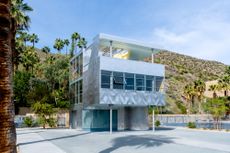 Albert Frey’s Aluminaire House is reborn in Palm Springs
Albert Frey’s Aluminaire House is reborn in Palm SpringsAluminaire House, designed by legendary modernist Albert Frey, has been reconstructed outside the Palm Springs Art Museum
By Michael Webb Published